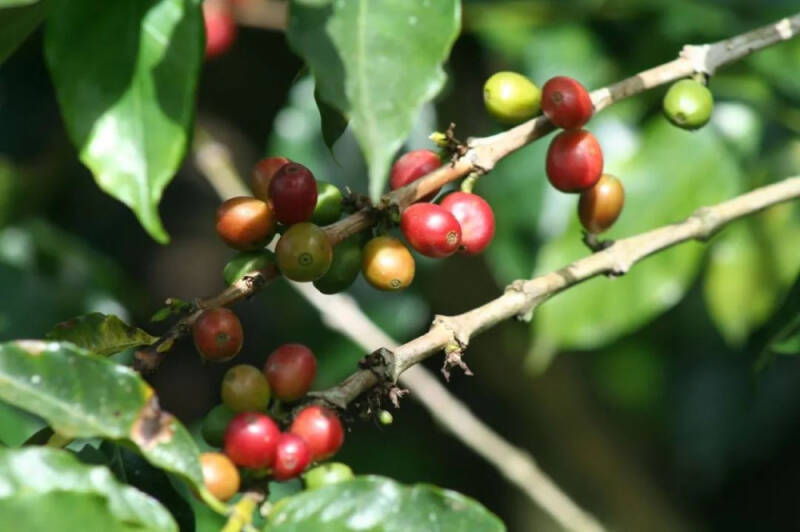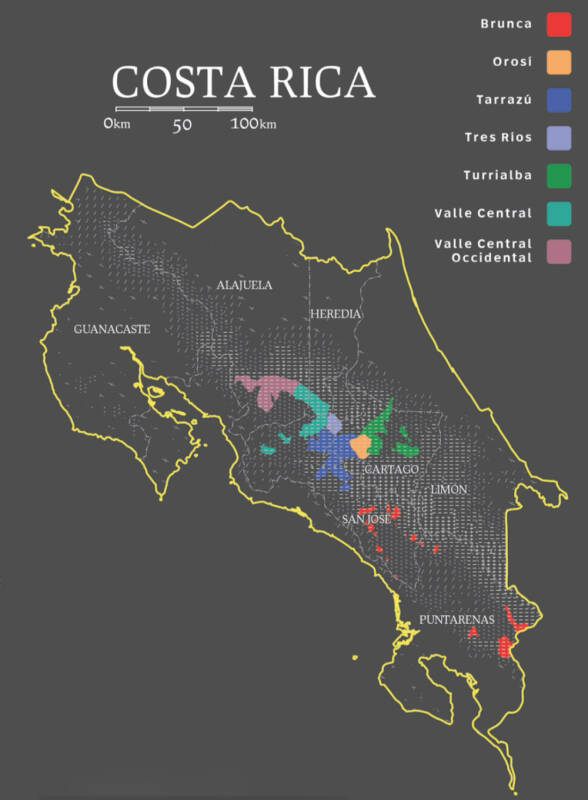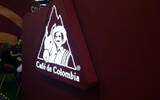Costa Rican Coffee Bean | introduction to Bach Coffee Bean Series of musicians in Tarazhu
It is well known that coffee beans are usually grown in the "coffee belt", which refers to the equatorial zone between the Tropic of Cancer and the Tropic of Cancer. The equator spans many continents, and America happens to be in the coffee belt, so many countries grow coffee, such as Guatemala, Panama, Honduras, Costa Rica and so on. Costa Rica is famous as the first country in Central America to grow coffee and bananas because of its commercial value.
Costa Rican coffee cultivation
Costa Rica is located in Central America, bordered by the Caribbean Sea to the east and the Pacific Ocean to the west, with a tropical and subtropical climate, with a number of towering volcanoes up to 2000 meters above sea level with temperatures ranging from 17 ℃ to 28 ℃. And by the Pacific and Atlantic ocean currents and sea breezes on climate regulation, the whole year is divided into the rainy season from April to December and the dry season from the end of December to April of the following year, with annual rainfall of 2000-3000 mm. The fertile volcanic soil, high altitude planting environment and abundant rainfall make Costa Rica a very suitable geographical environment for growing coffee.

Tarrazu in Tarazhu producing area
At present, more than 400 million coffee trees have been planted in Costa Rica, while there are eight coffee producing areas, including the Western Valley (Valley Central Occidental), the Central Valley (Valley Central), the Tarazu (Tarrazu), the Sanshui River (Tres Rios), Orosi (Orosi), Brunca (Bronka) and Turrialba (Duli Alba), almost all of them in the central mountains.

Tarazhu said that Costa Rica's largest and most famous coffee producing area, which accounts for nearly 35 percent of the total output, is mostly grown at an altitude of 1200 to 1900 meters above sea level. Tarazhu is the highest producing area in Costa Rica. Unique climatic conditions, abundant precipitation and fertile volcanic ash soil, covered by dense forests, provide an excellent growing environment for coffee beans. As a result, the coffee produced in this area has a pleasant acidity, with chocolate, floral and fruity flavours. This also made the region the first to become famous, so the Costa Rican government registered the coffee origin "Caf é de Tarraz ú" in 2019 to protect the Tarazu producing area and Tarazu coffee. Qianjie Coffee has a washed Tarazhu coffee, as an entry selection, with sweet orange, chocolate and nutty aromas, caramel back to sweet and long-lasting.
Carnett Manor Finca Canet
Carnett Manor is located in the town of San Margos in the Tarazu producing area, which is also the highest altitude and densest fruit-growing area in Costa Rica. While Carnett Manor mainly grows passion fruit, there is a specific area to grow coffee, and special care. The estate is owned by three brothers, the Robles brothers Leo, Elian and Melvin, and also has a small processing plant.
They launched a series of musicians (Musican Series) products, a total of four beans, using different beans, showing different unique characteristics. The name of this series of coffee beans is due to the fact that the owner of Carnett Manor loves classical music very much, and when tasting a coffee bean, the characteristics of musicians are similar to those of beans, so there are such as Bach, Beethoven, Mozart, Chopin. At present, there are two kinds of coffee beans, Mozart and Bach, on the front street.
F1 varieties
F1 is the result of coffee variety breeding program. The difference is that F1 does not refer to a particular variety, but to a type or a collection of coffee varieties. In 1970, coffee camel rust (Hemileia vastatrix), the main pathogen of coffee trees (the source of leaf rust), swept the entire American continent to fight the coffee disease, so the French Agricultural Research and Development Center (CIRAD) and the Central American Coffee Organization (ROMECAFE) jointly launched a new variety breeding program, which was assisted by the Inter-American Institute of Agriculture (IIAC) and the Tropical Plant Research Centre of Costa Rica (CATIE). Through the form of cross cultivation, a new generation of bean seeds with high yield, disease resistance and good flavor was developed.
CATIE selected Kaddura, Kaduai, Katim, Sachem (a hybrid of Verasaci and Tim) and an ancient African wild variety Rume Sudan from hundreds of coffee varieties. Pollen from T5296 (the offspring of Sachem) was extracted and smeared on the stamens of Rume Sudan by artificial pollination. After 5 years of efforts, CATIE has harvested a total of 100 different Cenozoic generations, and 20 of them with excellent performance were selected for breeding. The primary generations of these F1 not only have stronger disease resistance and drought tolerance, but also have the advantages of higher yield and better flavor. However, F1 also has its shortcomings and is difficult to produce in mass production. Because the heterosis begins to decline in the second generation, most F1 can not cultivate offspring in the way of self-crossing of conventional plants. Instead, a new batch of F1 plants can be obtained by repeated artificial pollination or cloning, which is one of the reasons why this kind of coffee varieties are generally called F1.
Front Street Coffee Costa Rican musicians Series Bach Coffee Bean producing area: Tarazu Manor / processing Plant: Carnett Manor elevation: 1900 meters above sea level: F1 treatment method: raisin honey treatment flavor: fermented rose fragrant blueberry cream caramel
This Baja coffee from Qianjie Coffee is treated with dried grape honey, which will make the coffee beans more full-bodied in fermented smell and rich in flavor. In front of the street, the proportion of V60JEL is 15 and the water temperature is 92 ℃. It will smell ripe berry-like fermented aromas and rose flowers, and the entrance will have blueberry-like sweet and sour taste, creamy smooth taste and caramel finish.
Important Notice :
前街咖啡 FrontStreet Coffee has moved to new addredd:
FrontStreet Coffee Address: 315,Donghua East Road,GuangZhou
Tel:020 38364473
- Prev

Bring your own cup with new requirements?! Manner refused to play coffee!
▲ click to follow | Daily boutique coffee culture magazine coffee workshop with the improvement of the quality of life, coffee has become an indispensable part of many people's daily life. In this era of pursuit of quality and taste, Manner coffee has gradually become a domestic coffee because of its high-quality drink taste and unique cultural connotation.
- Next

FNC of Colombia launches export platform Cafix for direct trade of coffee beans
Recently, the Colombian Federation of Coffee growers (FNC) announced the launch of the Cafix platform, a trade and logistics program aimed at simplifying producers' direct exports to international buyers, as Colombia's coffee exports increase. According to data from the Colombian Federation of Coffee Growers (FNC)
Related
- Law Enforcement Bureau? Mixue Ice City enters Zhengzhou BRT platform!
- Heavy! Nestlé has been exposed to consider selling blue bottle coffee!
- Compensation of 270 million yuan! Starbucks has been charged with violating labor laws more than 500,000 times!
- What are Xizhao coffee beans? Why did they become champion beans? How to rush to the manor on the dividing line in Colombia?
- What does channel effect mean in coffee? Why are there holes in the coffee powder cake?
- How much do you add to the milk for latte, Australian white and cappuccino? What is the ratio of coffee to milk between latte and frill?
- What is the cause of coffee astringency? Why does the brewed coffee feel astringent?
- The industry is heavy! Lucky will open its first store in Taiwan in December?!
- Unbelievable! Does one person at Starbucks wear a tiger head set and hold a mace to order?!
- Return to the way you came from?! Some cities in Mixue Ice City are selling breakfast!

